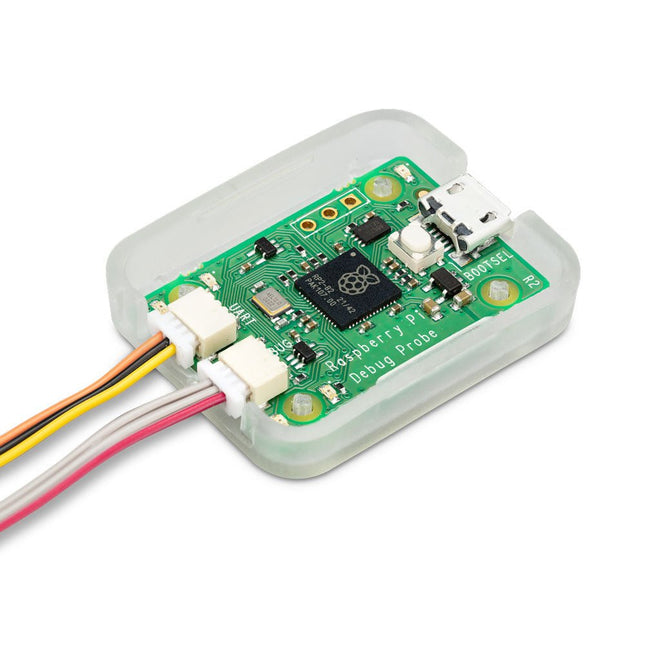Programmeurs & Debuggers
-

Raspberry Pi Foundation Raspberry Pi Debug Probe
De Raspberry Pi Debug Probe is een alles-in-één USB-naar-debug-kit die alle benodigde hardware en kabels biedt voor eenvoudig, soldeerloos, plug-and-play debuggen. Het beschikt over zowel een seriële debug-interface voor de processor (standaard de ARM Serial Wire Debug-interface, maar andere interfaces kunnen worden ondersteund) en een industriestandaard UART-interface. Beide interfaces gebruiken de Raspberry Pi 3-pins debug-connector. Het is ontworpen om het debuggen en programmeren van Raspberry Pi Pico en RP2040 gemakkelijk te maken met een reeks hostplatforms, waaronder Windows, Mac en typische Linux-computers. Hoewel de Debug Probe ontworpen is voor gebruik met Raspberry Pi-producten, biedt hij standaard UART- en CMSIS-DAP-interfaces via USB, zodat hij ook met andere processors kan worden gebruikt, of zelfs gewoon als USB-naar-UART-kabel. Het werkt met OpenOCD en andere tools die CMSIS-DAP ondersteunen. De Debug Probe is gebaseerd op Raspberry Pi Pico-hardware en draait op de open source Raspberry Pi Picoprobe-software. De firmware wordt op dezelfde manier bijgewerkt als de Raspberry Pi Pico-firmware, dus het is gemakkelijk om het apparaat up-to-date te houden met de nieuwste firmware of om aangepaste firmware te gebruiken. Kenmerken USB naar ARM Serial Wire Debug (SWD)-poort USB naar UART-brug Compatibel met de CMSIS-DAP standaard Werkt met OpenOCD en andere tools die CMSIS-DAP ondersteunen Open source, eenvoudig te upgraden firmware Specificaties Dimensions: 22 x 32 mm Nominal I/O voltage: 3.3 V Operating temperature: -20°C to +70°C Inbegrepen 1x Raspberry Pi Debug Probe 1x Kunststof koffer 1x USB-kabel 3x Debug-kabels 3-pins JST-connector naar 3-pins JST-connectorkabel 3-pins JST-connector naar 0,1-inch header (vrouwelijk) 3-pins JST-connector naar 0,1-inch header (mannelijk) Downloads Datasheet 3-pin Debug Connector Schematics Diagram Latest Firmware
